42 muscular system no labels
Science A-Z Science Diagrams - Visual Teaching Tools Science Diagrams from Science A-Z provide colorful, full-page models of important, sometimes complex science concepts. Science Diagrams, available in both printable and projectable formats, serve as instructional tools that help students read and interpret visual devices, an important skill in STEM fields. Renal System | histology - University of Michigan There are three layers that make up the filtering system of the glomerulus. These are the capillary endothelium, the glomerular basement membrane (made of the fused basement membranes of the endothelial cells and podocytes) and the podocyte layer. Renal capillaries are fenestrated capillaries without diaphragms. They are covered with podocalyxin, a negatively charged …
Muscular System Body Diagram Labelling Activity | Twinkl Use this set of muscular system body diagram to help your children learn all of the major skeletal muscle groups of the human body. Children are required to correctly allocate each muscle name to its corresponding label. This informative resource is perfect for teaching about muscles (KS2 level). It has 10 of the more widely-known muscles, including abdominals, pectorals and hamstrings ...
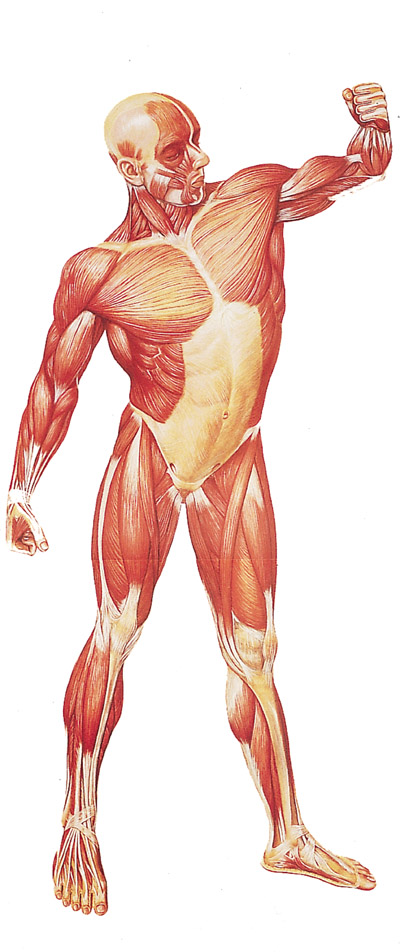
Muscular system no labels
Lymphatic and Immune Systems – Medical Terminology for ... Dec 14, 2021 · The lymphatic system is a series of vessels, ducts, and trunks that remove interstitial fluid from the tissues and return it to the blood. The lymphatic vessels are also used to transport dietary lipids and cells of the immune system. Cells of the immune system, lymphocytes, all come from the hematopoietic system of the bone marrow. Acetylcholine - Wikipedia Acetylcholine (ACh) is an organic chemical that functions in the brain and body of many types of animals (including humans) as a neurotransmitter. Its name is derived from its chemical structure: it is an ester of acetic acid and choline.Parts in the body that use or are affected by acetylcholine are referred to as cholinergic.Substances that increase or decrease the overall activity of the ... Food energy - Wikipedia Food energy is chemical energy that animals (including humans) derive from their food to sustain their metabolism, including their muscular activity.. Most animals derive most of their energy from aerobic respiration, namely combining the carbohydrates, fats, and proteins with oxygen from air or dissolved in water. Other smaller components of the diet, such as organic acids, polyols, …
Muscular system no labels. Genes | Free Full-Text | A Novel Method for Detecting Duchenne Muscular … 27/07/2022 · Duchenne muscular dystrophy (DMD) is the most common form of muscular dystrophy, typically affecting males in infancy. The disease causes progressive weakness and atrophy of skeletal muscles, with approximately 20,000 new cases diagnosed yearly. Currently, methods for diagnosing DMD are invasive, laborious, and unable to make accurate early … Human Skeleton Diagram This diagram comes in six versions, all combined into one PDF: 1. Human Skeleton Diagram – Color – Labeled 2. Human Skeleton Diagram – Color – Blanks to Fill in 3. Human Skeleton Diagram – Color -No Labels or Blanks (For bulletin boards/decorations etc) 4. Human Skeleton Diagram – Black and White – Labeled 5. Digestive System – Building a Medical Terminology Foundation Although the small intestine is the workhorse of the system, where the majority of digestion occurs, and where most of the released nutrients are absorbed into the blood or lymph, each of the digestive system organs makes a vital contribution to this process (see Figure 15.1). Figure 15.1 Components of the Digestive System. All digestive organs ... Food energy - Wikipedia Many governments require food manufacturers to label the energy content of their products, to help consumers control their energy intake. To facilitate evaluation by consumers, food energy values (and other nutritional properties) in package labels or tables are often quoted for convenient amounts of the food, rather than per gram or kilogram; such as in "calories per serving" or "kcal per 100 ...
A&P 139 Chapter 22 Reproductive System Flashcards | Quizlet Each label describes a structure or an event associated with the uterine cycle. Drag each of the labels to the appropriate box, indicating whether each is present or occurs before or after ovulation. Assume a 28-day cycle with day 1 being the first day of menstrual flow and ovulation at day 14. 9 Cardiovascular System - University of West Florida We can detect and record the electrical activity of the heart’s conduction system using an electrocardiogram (ECG or EKG). Figure 9.7 shows the electrical impulse originating in the SA node (step 2) and traveling through the heart’s conduction system, allowing the heart to complete one cardiac cycle. Each waveform on the ECG tracing ... Muscular System Body Diagram Labelling Activity | Twinkl Use this set of muscular system body diagram to help your children learn all of the major skeletal muscle groups of the human body. Children are required to correctly allocate each muscle name to its corresponding label. This informative resource is perfect for teaching about muscles (KS2 level). It has 10 of the more widely-known muscles, including abdominals, pectorals and … Labelling the heart — Science Learning Hub 16/06/2017 · The heart is a muscular organ that pumps blood through the blood vessels of the circulatory system. Blood transports oxygen and nutrients to the body. It is also involved in the removal of metabolic wastes.
Labelling the heart — Science Learning Hub Jun 16, 2017 · The heart is a muscular organ that pumps blood through the blood vessels of the circulatory system. Blood transports oxygen and nutrients to the body. It is also involved in the removal of metabolic wastes. Human Skeleton Diagram This diagram comes in six versions, all combined into one PDF: 1. Human Skeleton Diagram – Color – Labeled 2. Human Skeleton Diagram – Color – Blanks to Fill in 3. Human Skeleton Diagram – Color -No Labels or Blanks (For bulletin boards/decorations etc) 4. Human Skeleton Diagram – Black and White – Labeled 5. Human Skeleton ... Cardiovascular System – Medical Terminology for Healthcare ... The bottom panel shows a rough map of the human circulatory system. Labels read (from top, clockwise): systemic capillaries of upper body, systemic arteries to upper body, pulmonary trunk, left atrium, left ventricle, systemic arteries to lower body, systemic capillaries of lower body, systemic veins from lower body, right ventricle, right ... Food energy - Wikipedia Food energy is chemical energy that animals (including humans) derive from their food to sustain their metabolism, including their muscular activity.. Most animals derive most of their energy from aerobic respiration, namely combining the carbohydrates, fats, and proteins with oxygen from air or dissolved in water. Other smaller components of the diet, such as organic acids, polyols, …
Acetylcholine - Wikipedia Acetylcholine (ACh) is an organic chemical that functions in the brain and body of many types of animals (including humans) as a neurotransmitter. Its name is derived from its chemical structure: it is an ester of acetic acid and choline.Parts in the body that use or are affected by acetylcholine are referred to as cholinergic.Substances that increase or decrease the overall activity of the ...
Lymphatic and Immune Systems – Medical Terminology for ... Dec 14, 2021 · The lymphatic system is a series of vessels, ducts, and trunks that remove interstitial fluid from the tissues and return it to the blood. The lymphatic vessels are also used to transport dietary lipids and cells of the immune system. Cells of the immune system, lymphocytes, all come from the hematopoietic system of the bone marrow.




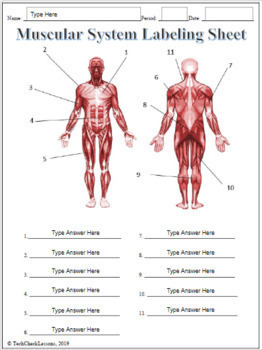




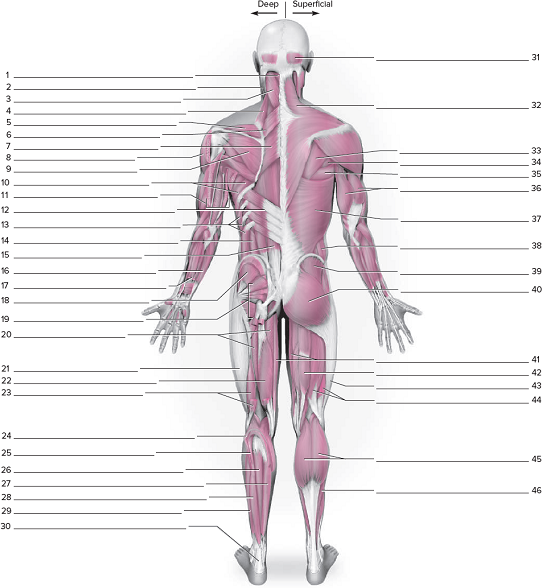
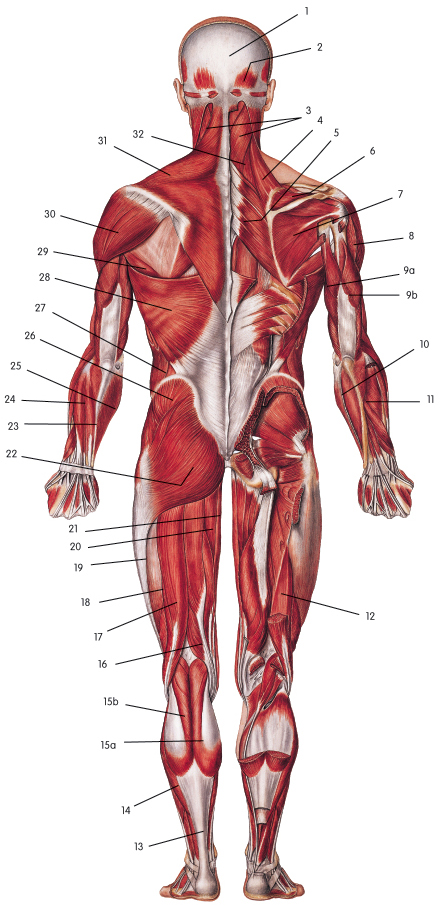
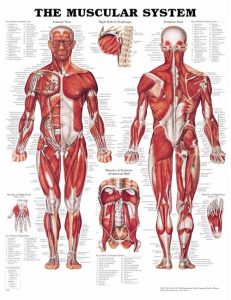
Post a Comment for "42 muscular system no labels"